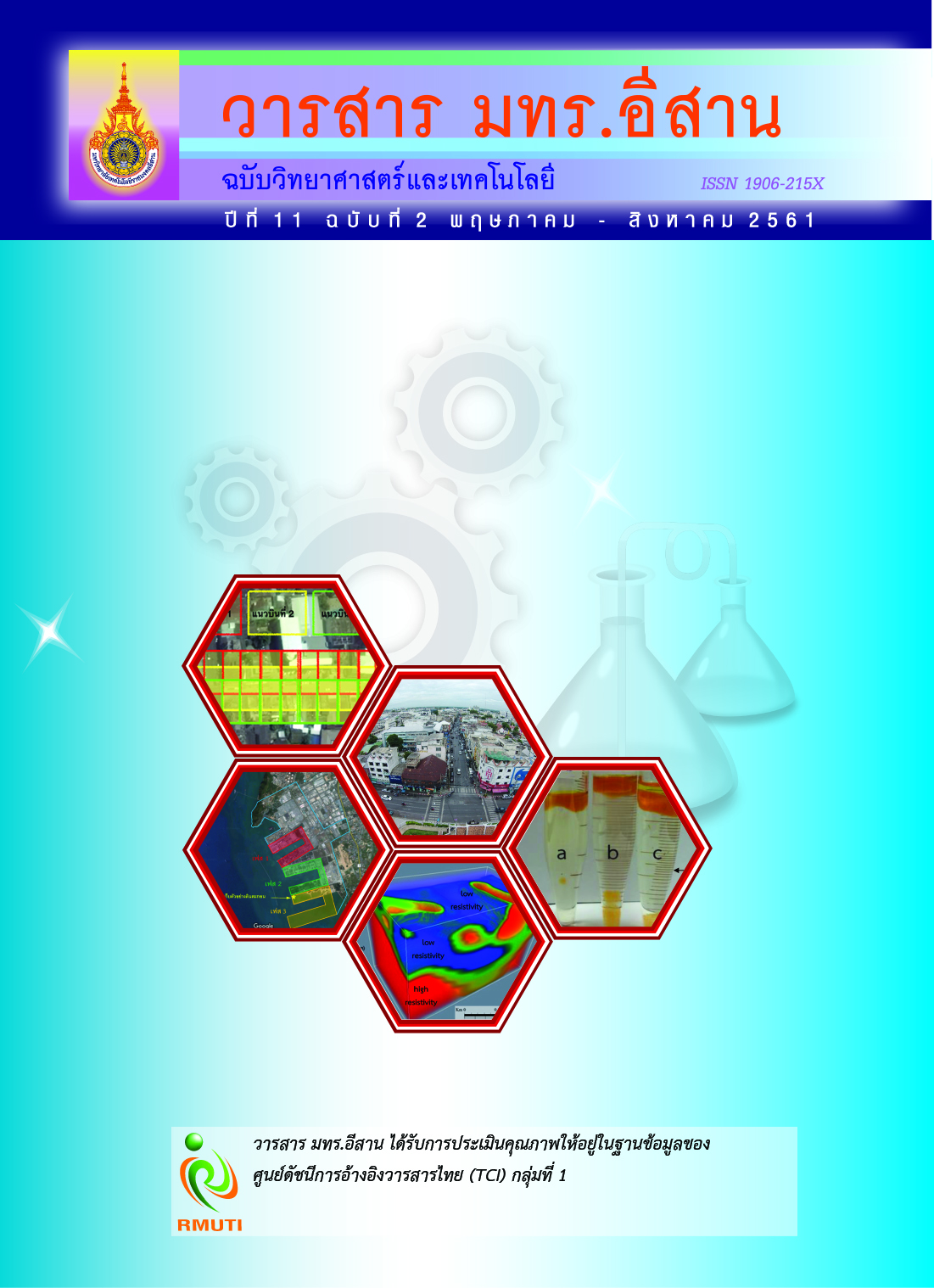Hardness and Impact Resistance Study of Flooring Epoxy Nanocomposites from Alternative Materials
Main Article Content
Abstract
This article aims to present the study of effects of two additive materials to reinforce materials an epoxy resin matrix, a widely used thermosetting polymer. Epoxy is used in many applications nowadays, such as in fiber glass works, automotive parts, electrical electrodes, coating of surfaces and flooring materials. The first additive material is fly ash, a coal combustion by-products from power plants. The second material comprises Chain-like Carbon Nano-Onions (CLCNOs) which are synthesized from a flame burning process. Using strengthening advantages of fly ash (silica and alumina) and hardness from CLCNOs, the bulk volume, stiffness and hardness of the resin can be increased. These CLCNOs are new chain-structure Nano carbons with interesting mechanical properties in comparison with other additives or reinforced fibers.
Article Details
References
[2] Kanchanaworawanich, B. (2008). Interesting Material: Polymer Composites. Access (18 October 2017). Available (https://old.mtec.or.th/academic-services/mtec-knowledge/79) (in Thai)
[3] Nakason, C. (2003). Introduction to Plastic Technology. Bangkok: Forepace Publisher.
[4] Kru Aor Chemistry Tutor. (2017). Epoxy: Do you know. Access (18 October 2017). Available (https://www.kru-aor.com/Chem_Tips/epoxy.html) (in Thai)
[5] S. Sen and N. Nugay. (2000). Uncured and Cured State Properties of Fly Ash Filled Unsaturated Polyester Composites. Journal of Applied Polymer Science. Vol. 77, Issue 5, pp. 1128-1136
[6] Kruehong, S., Kruehong, C., Chindaprasirt, P., and Artnaseaw, A. (2015). Candle Flame Synthesis and Electrochemical Behavior of Chain-like Carbon Nano-onions on 304 Stainless Steel. Chiang Mai Journal of Science. Vol. 42, No. 3, pp. 1-7 (in Thai)
[7] Guhanathan, S., Devi, S. M., and Murugesan, V. (2001). Effect of Coupling Agent on the Mechanical Properties of Fly Ash/Polyester Particulate Composites. Journal of Applied Polymer Science. Vol. 82, Issue 7, pp. 1755-1760
[8] Alkan, C., Arslan, M., Cici, M., Kaya, M., and Aksoy, M. (1995). A Study on the Production of New Material from Fly Ash and Polyethylene. Resourses Conservation and Recycling. Vol. 13, Issue 3-4, pp. 147-154. DOI: 10.1016/0921-3449(94)00014-V
[9] Li, Y., White, D. J., and Peyton, R. L. (1998). Composite Material from Fly Ash and Post-consumer PET. Resources, Conservation & Recycling. Vol. 24, Issue 2, pp. 87-93
[10] Sombatsompop, N. and Kositchaiyong, A. (2006). Research on Wastewater Tanks from Polyethylene-Inorganic Composites for Cost Saving Purposes. Final Research Report. Office of the Higher Education Commission (OHEC). pp. 49-103 (in Thai)
[11] Kositchaiyong, A., Mitrprasertporn, S., Wimolmala, E., and Sombatsompop, N. (2010). Re-using of Fly Ash Particles from Power-Plant Station as Alternative Filler in Rotational - Moulded Polyethylene Products. Proceedings of the 48th KU Conference. pp. 1-8 (in Thai)
[12] Kishore, S. M., Kulkarni, S., Sunil, D., and Sharathchandra, S. (2002). Effect of Surface Treatment on the Impact Behavior of Fly-ash Filled Polymer Composites. Polymer International. Vol. 51, Number 12, pp. 1378-1384. DOI: 10.1002/pi.1055
[13] Chaowasakoo, T. and Sombatsompop, N. (2007). Effects of Curing Techniques and Silane Treatment on Mechanical and Morphological Properties of Fly Ash/Epoxy Composites. Songklanakarin Journal of Science and Technology. Vol. 29, No. 1, pp. 217-230 (in Thai)
[14] R. Andrews, D. Jacques, D. Qian, and T. Rantell. (2002). Multiwall Carbon Nanotubes: Synthesis and Application. Accounts of Chemical Research. Vol. 35. No. 12. pp. 1008-1017. DOI: 10.1021/ar010151m
[15] Ajayan, P. M., Stephan, O., Colliex, C., and Trauth, D. (1994). Aligned Carbon Nanotube Arrays Formed by Cutting a Polymer Resin - Nanotube Composite. Science. Vol. 265, Issue 5176, pp. 1212-1214. DOI: 10.1126/science.265.5176.1212
[16] Nhuapeng, W. (2008) Carbon Nanotube/Silicon Carbide/Epoxy Resin Nanocomposites. Final Research Report. Office of the Higher Education Commission (OHEC). November. (in Thai)
[17] Hall, B., Zhuo, C., Levendis, Y. A., and Richter, H. (2011). Influence of the Fuel Structure on the Flame Synthesis of Carbon Nanomaterials. Carbon. Vol. 49, Issue 11, pp. 3412-3423. DOI: 10.1016/j.carbon.2011.04.036
[18] Y. -Y. Li and C. -C. Hsieh. (2007). Synthesis of Carbon Nanotubes by Combustion of a Paraffin Wax Candle. Micro and Nano Letters. Vol. 2, No. 3, pp. 63-66
[19] Yuan, L., Li, T., and Saito, K. (2003). Growth Mechanism of Carbon Nanotubes in Methane Diffusion Flames. Carbon. Vol. 41, Issue 10, pp. 1889-1896
[20] Kruehong, S., Artnaseaw, A., and Kruehong, C. (2013). Important Factors on the Flame Synthesis of Carbon Nanotubes. The Journal of Industrial Technology. Vol. 9, Issue 3, pp. 183-194 (in Thai)


